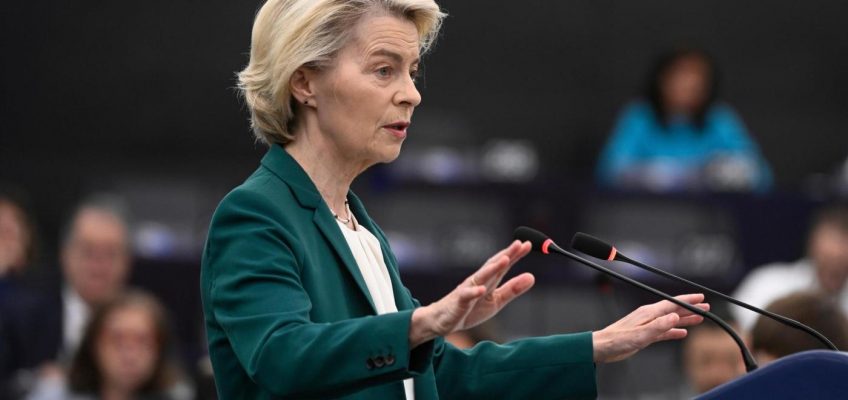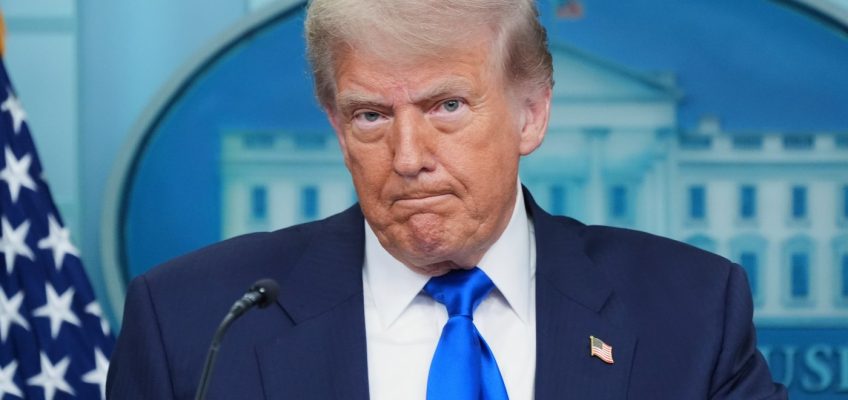By MATTHEW LEE, Associated Press Diplomatic Writer
KUALA LUMPUR, Malaysia (AP) — U.S. Secretary of State Marco Rubio and his Russian counterpart met Thursday in Malaysia as tensions between the countries rise over Moscow’s increasing attacks on Ukraine and whether Russia’s leader is serious about a peace deal.
Rubio and Foreign Minister Sergey Lavrov held talks in Kuala Lumpur on the sidelines of the annual Association of Southeast Asian Nations Regional Forum, which brings together 10 ASEAN members and their most important diplomatic partners including Russia, China, Japan, South Korea, European nations and the U.S.
The meeting lasted around 50 minutes. Rubio was seen winking at Lavrov afterward as reporters shouted questions, which they both ignored.
U.S. Secretary of State Marco Rubio, front, arrives at Subang Air Base, outside of Kuala Lumpur Thursday, July 10, 2025. Rubio arrived in Malaysia to attend the ASEAN Foreign Ministers’ Meeting. (Mandel Ngan/Pool Photo via AP)
The meeting was their second encounter since Rubio took office, although they have spoken by phone several times. Their first meeting took place in February in Riyadh, Saudi Arabia, as the Trump administration sought to test Russia and Ukraine on their willingness to make peace.
Thursday’s meeting occurred shortly after the U.S. resumed some shipments of defensive weapons to Ukraine following a pause, ostensibly for the Pentagon to review domestic munitions stocks, that was cheered in Moscow.
The resumption comes as Russia fires escalating air attacks on Ukraine and as U.S. President Donald Trump has become increasingly frustrated with Russian President Vladimir Putin.
“Putin is not, he’s not treating human beings right,” Trump said during a Cabinet meeting Tuesday, explaining the pause’s reversal. “It’s killing too many people. So we’re sending some defensive weapons to Ukraine, and I’ve approved that.”
US diplomatic push could be overshadowed by tariff threats
Rubio was also seeing other foreign ministers, including many whose countries face tariffs set to be imposed Aug. 1. The tariff threat could overshadow the top diplomat’s first official trip to Asia, just as the U.S. seeks to boost relations with Indo-Pacific nations to counter China’s growing influence in the region.
Rubio sought to assuage concerns as he held group talks with ASEAN foreign ministers.
U.S. Secretary of State Marco Rubio, second left, meets with Malaysia’s Prime Minister Anwar Ibrahim, right, at the prime minister’s office at Parliament as the Association of Southeast Asian Nations (ASEAN) Foreign Ministers’ Meeting takes place in Kuala Lumpur Thursday, July 10, 2025. (Mandel Ngan/Pool Photo via AP)
“The Indo Pacific, the region, remains a focal point of U.S. foreign policy,” he told them. “When I hear in the news that perhaps the United States or the world might be distracted by events in other parts of the planet, I would say distraction is impossible, because it is our strong view and the reality that this century and the story of next 50 years will largely be written here in this region.”
“These are relationships and partnerships that we intend to continue to build on without seeking the approval or the permission of any other actor in the region of the world,” Rubio said in an apparent reference to China.
Trump notified several countries on Monday and Wednesday that they will face higher tariffs if they don’t make trade deals with the U.S. Among them are eight of ASEAN’s 10 members.
U.S. State Department officials said tariffs and trade won’t be Rubio’s focus during the meetings, which Trump’s Republican administration hopes will prioritize maritime safety and security in the South China Sea, where China has become increasingly aggressive toward its small neighbors, as well as combating transnational crime.
But Rubio may be hard-pressed to avoid the tariff issue that has vexed some of Washington’s closest allies and partners in Asia, including Japan and South Korea and most members of ASEAN, which Trump says would face 25% tariffs if there is no deal.
Rubio also met with Malaysian Prime Minister Anwar Ibrahim, who has warned global trade is being weaponized to coerce weaker nations. Anwar urged the bloc Wednesday to strengthen regional trade and reduce reliance on external powers.
Rubio’s “talking points on the China threat will not resonate with officials whose industries are being battered by 30-40% tariffs,” said Danny Russel, vice president of the Asia Society Policy Institute and a former assistant secretary of state for East Asia and the Pacific during the Obama administration.
When Anwar said “ASEAN will approach challenges ‘as a united bloc’ he wasn’t talking about Chinese coercion but about U.S. tariffs,” Russel noted.
Majority of ASEAN members face major tariff hikes
Among ASEAN states, Trump has announced tariffs on almost all of the bloc’s 10 members.
Trump sent tariff letters to two more ASEAN members Wednesday: Brunei, whose imports would be taxed at 25%, and the Philippines at 20%. Others hit this week include Cambodia at 36%, Indonesia at 32%, Laos at 40%, Malaysia at 25%, Myanmar at 40% and Thailand at 36%.
Vietnam recently agreed to a trade deal for a 20% tariffs on its imports, while Singapore still faces a 10% tariff that was imposed in April. The Trump administration has courted most Southeast Asian nations in a bid to blunt or at least temper China’s push to dominate the region.
Related Articles
A surprise IRS move on political endorsements leaves faith leaders and legal experts divided
FACT FOCUS: Trump misrepresents facts about wind power during Cabinet meeting
US issues sanctions against UN investigator probing abuses in Gaza
Trump administration resumes sending some weapons to Ukraine after Pentagon pause
Man accused of Trump assassination attempt in Florida seeks to remove defense attorneys from case
In Kuala Lumpur, Rubio also will likely come face-to-face with China’s foreign minister during his visit of about 36 hours.
Chinese Foreign Minister Wang Yi is a veteran of such gatherings and “fluent in ASEAN principles and conventions,” while Rubio “is a rookie trying to sell an ‘America First’ message to a deeply skeptical audience,” Russel noted.
Issues with China remain substantial, including trade, human rights, militarization of the South China Sea and China’s support for Russia in Ukraine.
U.S. officials continue to accuse China of resupplying and revamping Russia’s military industrial sector, allowing it to produce additional weapons that can be used to attack Ukraine.
Earlier on Thursday, Rubio signed a memorandum on civilian nuclear energy with Malaysia’s foreign minister, which will pave the way for negotiations on a more formal nuclear cooperation deal, known as a 123 agreement after the section of U.S. law allowing such programs.
Those agreements allow the U.S. government and U.S. companies to work with and invest in civilian energy nuclear programs in other countries under strict supervision.
Eileen Ng contributed to this report.




